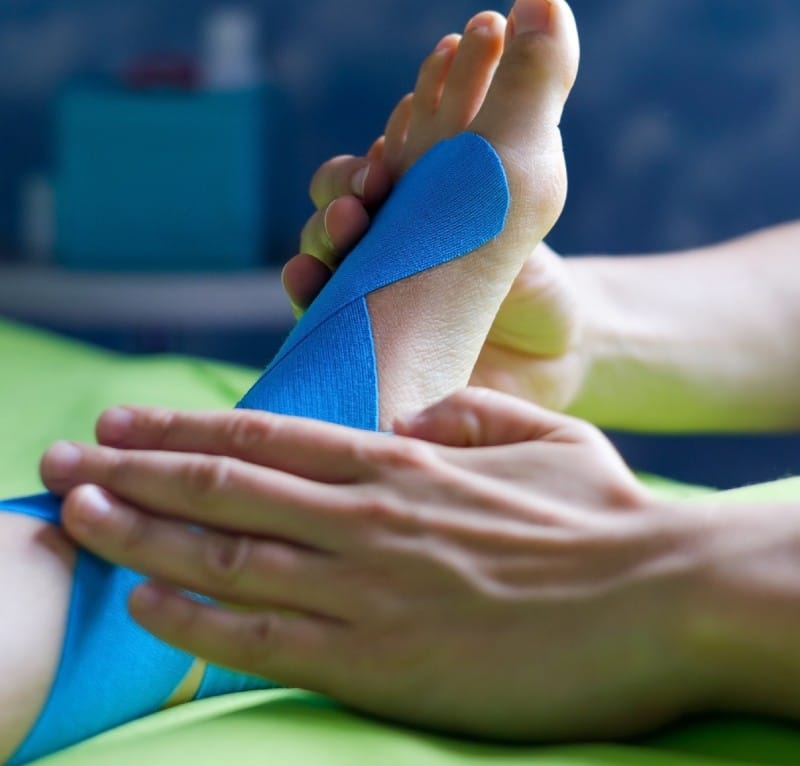Sports Injuries
Engaging in physical activity is essential for maintaining health and fitness. It enhances overall well-being and helps achieve personal fitness goals. However, participating in sports or exercise also comes with the risk of injuries, particularly in the lower limbs. Understanding the causes of sports injuries and learning effective prevention strategies can help you stay active and injury-free.
What Causes Sports Injuries?
Sports injuries affecting the feet and ankles generally fall into two categories: acute injuries and overuse injuries.
Acute Injuries
Acute sports injuries occur suddenly, often due to an unexpected impact, fall, or twist. These injuries typically result from a forceful action that exceeds the normal range of motion. Common acute injuries include:
- Ankle Sprains: These occur when the ligaments around the ankle stretch or tear due to sudden twisting or rolling of the foot.
- Fractures: A fracture is a break in a bone caused by high-impact events. In sports, fractures often occur in the toes, ankles, or feet.
- Turf Toe: This injury involves a sprain at the base of the big toe. It commonly happens when the toe is forcefully bent upward, often in sports played on artificial turf.
Overuse Injuries
Overuse injuries develop gradually due to repetitive motions or prolonged stress on muscles, tendons, and bones. These injuries are common in athletes who engage in high-impact activities without adequate rest. Examples include:
- Stress Fractures: Tiny cracks in the bone’s surface caused by repetitive stress, often seen in runners and athletes.
- Achilles Tendinitis: Inflammation of the Achilles tendon due to repetitive activity or a sudden increase in exercise intensity.
- Morton’s Neuroma: Thickening of nerve tissue in the ball of the foot, leading to pain, tingling, or numbness.
- Black Toenail: Caused by repeated trauma to the toenail, leading to bleeding under the nail. This is common among runners.
How to Treat Sports Injuries
Treating sports injuries effectively depends on the type and severity of the injury. General treatment approaches include:
- Rest and Recovery: Limiting movement of the injured area helps promote healing and prevents further damage.
- Ice Therapy: Applying ice reduces swelling and numbs the affected area, easing pain.
- Compression and Elevation: Using compression wraps and elevating the injured limb minimizes swelling and supports recovery.
- Physical Therapy: Rehabilitation exercises restore strength, flexibility, and mobility to the injured area.
- Medical Intervention: Severe injuries, such as fractures or torn ligaments, may require medical treatment, including surgical intervention.
Preventing Sports Injuries
The best way to manage sports injuries is to prevent them from happening. Here are some practical tips:
- Warm-Up and Stretch: Always warm up before exercising to prepare your muscles and joints for physical activity.
- Use Proper Equipment: Wearing the right footwear and protective gear reduces the risk of injury.
- Gradual Progression: Increase the intensity and duration of your workouts gradually to avoid overloading your body.
- Cross-Training: Vary your exercises to prevent overuse injuries and enhance overall fitness.
- Listen to Your Body: If you experience pain or discomfort, take a break. Ignoring warning signs can lead to serious injuries.
Professional Sports Injury Treatment in Richardson, TX
At Richardson Podiatry Center, we specialize in diagnosing and treating sports injuries affecting the feet and ankles. Our experienced podiatrist provides personalized care, starting with conservative treatment options. If necessary, we also offer advanced surgical solutions to ensure a full recovery.
Don’t let sports injuries hold you back. Contact Richardson Podiatry Center today at (972) 690-5374 to schedule an appointment. We are committed to helping you return to your active lifestyle safely and effectively.


